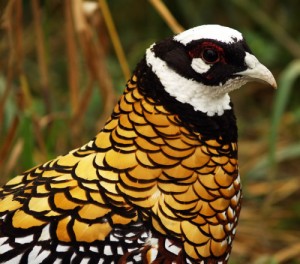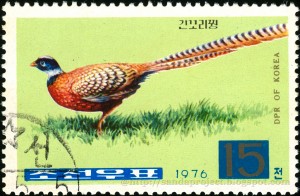Week 21 – 04 December 2016:
A Bird Too Beautiful
Physics, chemistry and astronomy are simple. Each of these disciplines is governed by a limited number of physical laws. If the chemical naphthalene melts at 80.2 degrees Celsius today, it will melt at 80.2 degrees Celsius tomorrow. If Mars takes 24 hours, 37 minutes and 22 seconds to rotate on its axis this week, the same will be true next week.
Biology is difficult. At every turn, life introduces uncertainty, meaning that if 1435 Pied Wagtails show up at a nocturnal roost in Scotland tonight, we cannot know with absolute certainty how many will show up tomorrow night. When biology become conservation biology, the world becomes a ridiculously complicated place. Every conservation issue involves a tangle of interactions among countless species, interactions between those species and their non-living world, and complications of economics, ethics and politics.
Surely there is no place in the world where conservation biology is more complex than China. Considering birds alone, the nation has almost 1400 species, seventy-five of which breed in China and nowhere else. Among China’s endemic birds, the Sichuan Partridge, Hainan Peacock-pheasant, Silver Oriole and Blue-crowned Laughingthrush are all endangered and declining in number. The Manchurian Reed-warbler, Grey-hooded Parrotbill, Cabot’s Tragopan and many more are considered vulnerable.
Chunfa Zhou and Zhengwang Zhang of Beijing Normal University and Jiliang Xu of Beijing Forest University recognized the need for up-to-date information on the abundance and distribution of Reeves’s Pheasant. Endemic to central China, this pheasant was, comparatively recently, abundant and distributed widely. As a result of illegal hunting and habitat destruction and fragmentation, Reeves’s Pheasant is currently recognized to be Vulnerable by the IUCN. Zhou and her colleagues asked if that category was appropriate.
In the search for the pheasant, field surveys were supplemented by interviews of local residents, elders, village heads and hunters, and with personnel in county forestry bureaus. Sightings of birds along transect lines, the sound of the pheasant’s “wing-whirring displays,” and the presence of moulted feathers were all used as evidence of ongoing occupation of an area.
The results of Zhou et al. were not encouraging. Since earlier surveys, 46% of sites had lost their Reeves’s Pheasants, and many other populations had declined in abundance. The human population continues to grow in the area, and economic development plans are likely to make the situation worse in the future.
Zhou et al. wrote: “The long tail feathers of the male Reeves’s pheasant are widely used for decoration of Chinese opera costumes… and consequently a great number of Reeves’s pheasants are hunted.” These birds may be too attractive for their own good. Poaching was apparent at 83% of surveyed sites, and poisoning at 20% of sites. “Farmers in China deliberately poison Galliformes (grouse, pheasants etc.) to prevent them from eating crop seeds,” wrote Zhou et al. In rural areas, it seemed that people were not conversant with national policies on wildlife, and conservation education programs directed at small towns did not get the message to those in remote rural situations. The booming Chinese economy has led to ongoing deforestation of the exactly the sort of habitat preferred by Reeves’s Pheasant.
As the Chinese government works to upgrade its conservation policies, it is important that the best estimates of abundance and distribution be considered. Zhou and her colleagues suggested that the status of Reeves’s Pheasant be upgraded to a first-grade nationally protected species, and that the IUCN change the bird’s status from vulnerable to endangered.
Zhou, C., J. Xu and Z. Zhang. 2015. Dramatic decline of the vulnerable Reeves’s Pheasant Syrmaticus reevesii, endemic to central China.
Photo credits: Reeve’s Pheasant - www.tumblr.com; Reeve’s Pheasant stamp - sandaproject.blogspot.com.au



